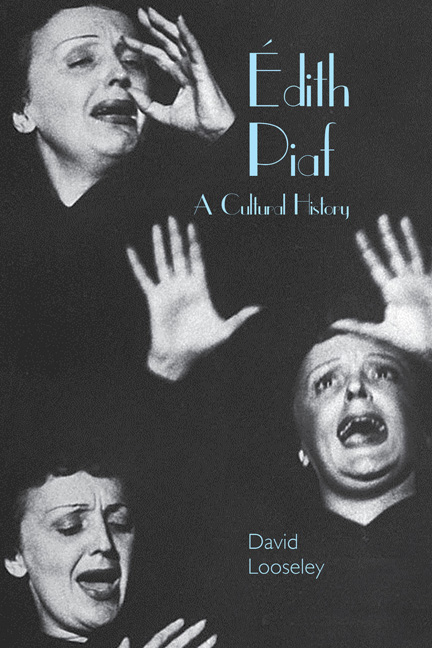1 - Inventing la Môme
from Part I - Narrating Piaf
Summary
‘How monstrously she wanted to become something else’
(Henri Contet)Édith Gassion was born on 19 December 1915, daughter of Annetta Giovanna Maillard, herself a street singer using the alias Line Marsa, and of Louis Gassion, a circus performer and itinerant acrobat and contortionist. Both parents came from circus or fairground backgrounds. They married in September 1914, the month after Louis was called up, separated probably in 1919 and finally divorced in 1929. Left alone, Annetta appears to have consigned her baby daughter to her half-Moroccan mother Aïcha until Louis, returning from the front to find the little girl dirty and unhealthy, removed her to his own mother's brothel in Bernay, where she found a degree of security and love. Around the age of seven, she moved again, joining the Caroli circus with her father and living in a caravan. When he later went solo and began performing acrobatics in the street, Édith passed the hat and, so the story goes, did a little singing to soften the hearts of the crowd. She recounts that the first ever song she sang publicly was the only one she knew at the time, the national anthem, the ‘Marseillaise’, though in an interview in 1936, at the time of the left-wing Popular Front government, she claimed it was the ‘Internationale’. Aged about 15, Édith struck out on her own, first taking several short-term jobs, then turning to street singing.
The French popular music economy of the 1920s and 1930s centred on Paris and involved three types of venue, though in practice the boundaries between them were unstable. One was the commercial music hall, where the dazzling revues for which Paris was famous had taken hold in the 1910s at the Folies-Bergère, the Olympia and the Casino de Paris, with their sequinned, feathered and bare-breasted dancing girls, glittering staircases and up-to-the-minute electrical effects. In the aftermath of war, the halls emulated the mass spectacles of Broadway in a wave of Americanisation, popularising jazz and associated dance styles like the charleston, the shimmy and the black bottom. Within the revue formula, established stars—among them Maurice Chevalier (1888–1972), Yvette Guilbert (1867–1944) and Mistinguett (1873–1956)— would deliver cheery, comic or salacious numbers. The hit songs of the time usually came from these revues, as did the latest singing stars, like Josephine Baker (1906–75) and the Corsican crooner Tino Rossi (1907–83).
- Type
- Chapter
- Information
- Édith PiafA Cultural History, pp. 27 - 44Publisher: Liverpool University PressPrint publication year: 2015



